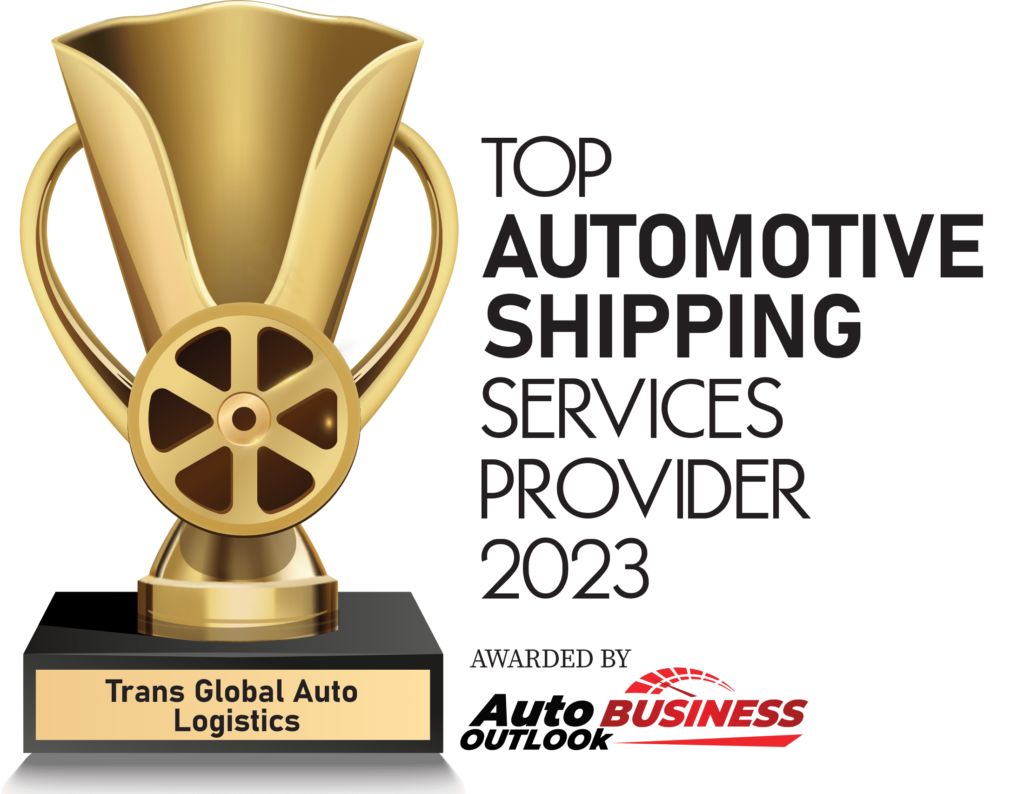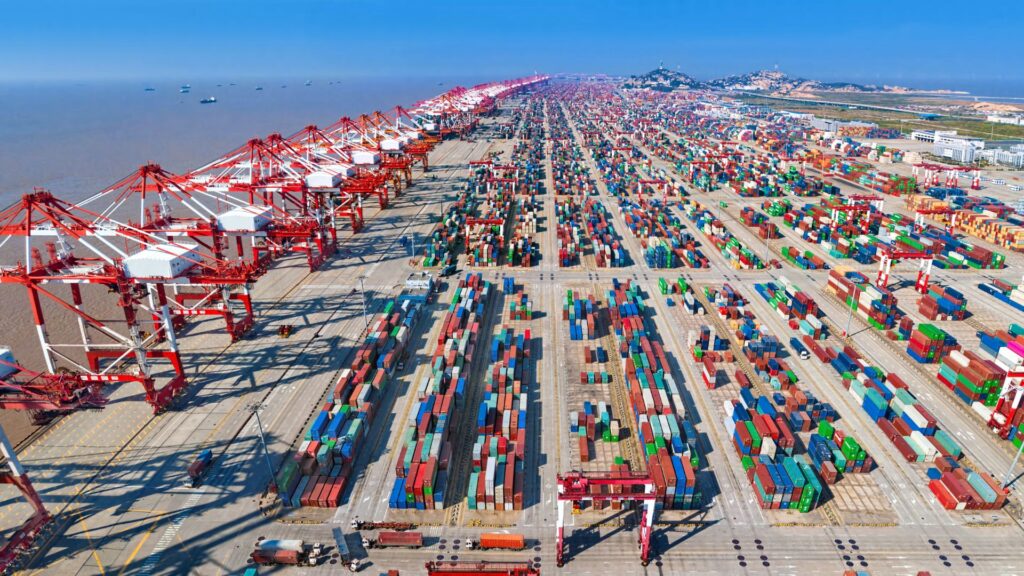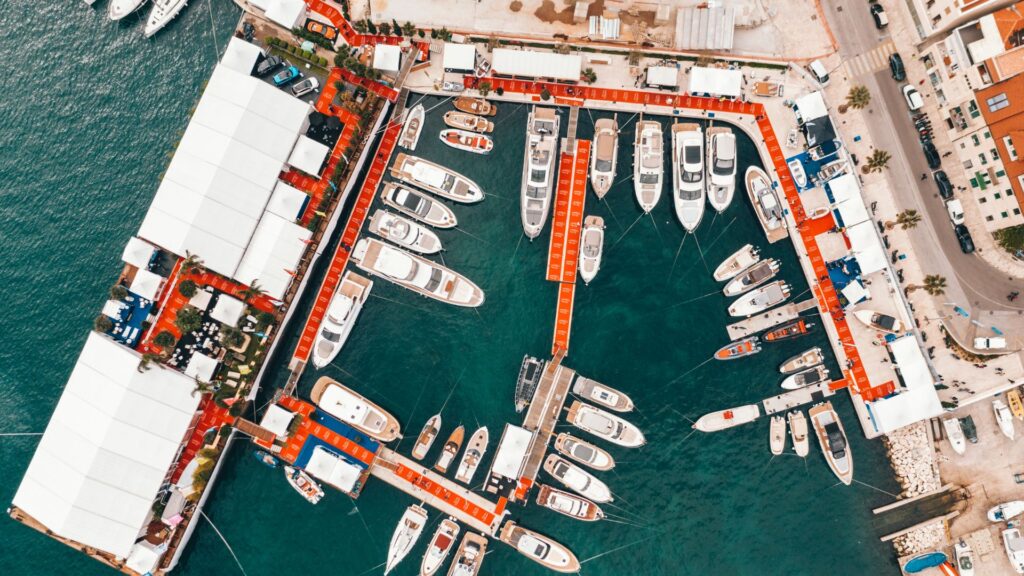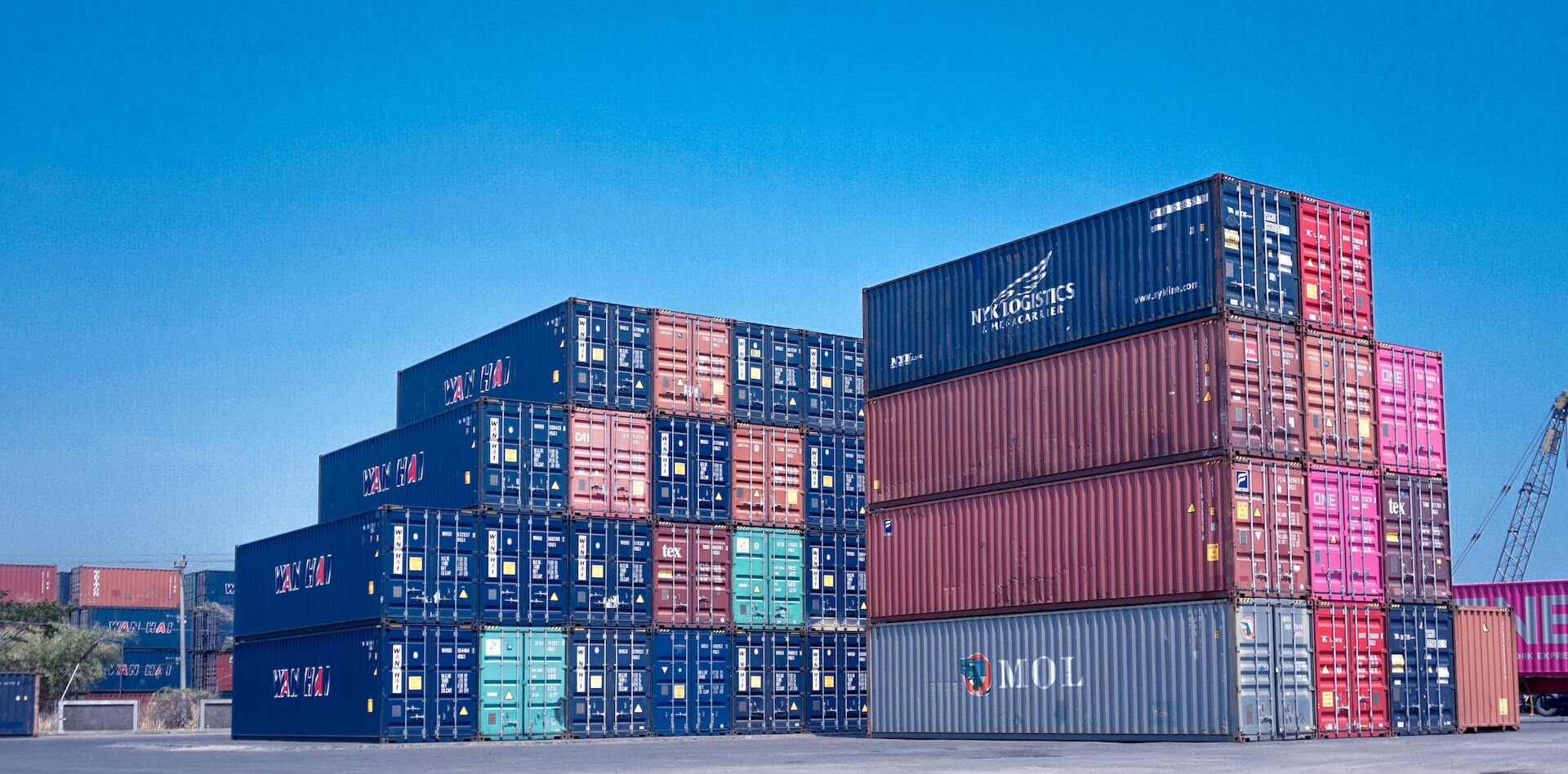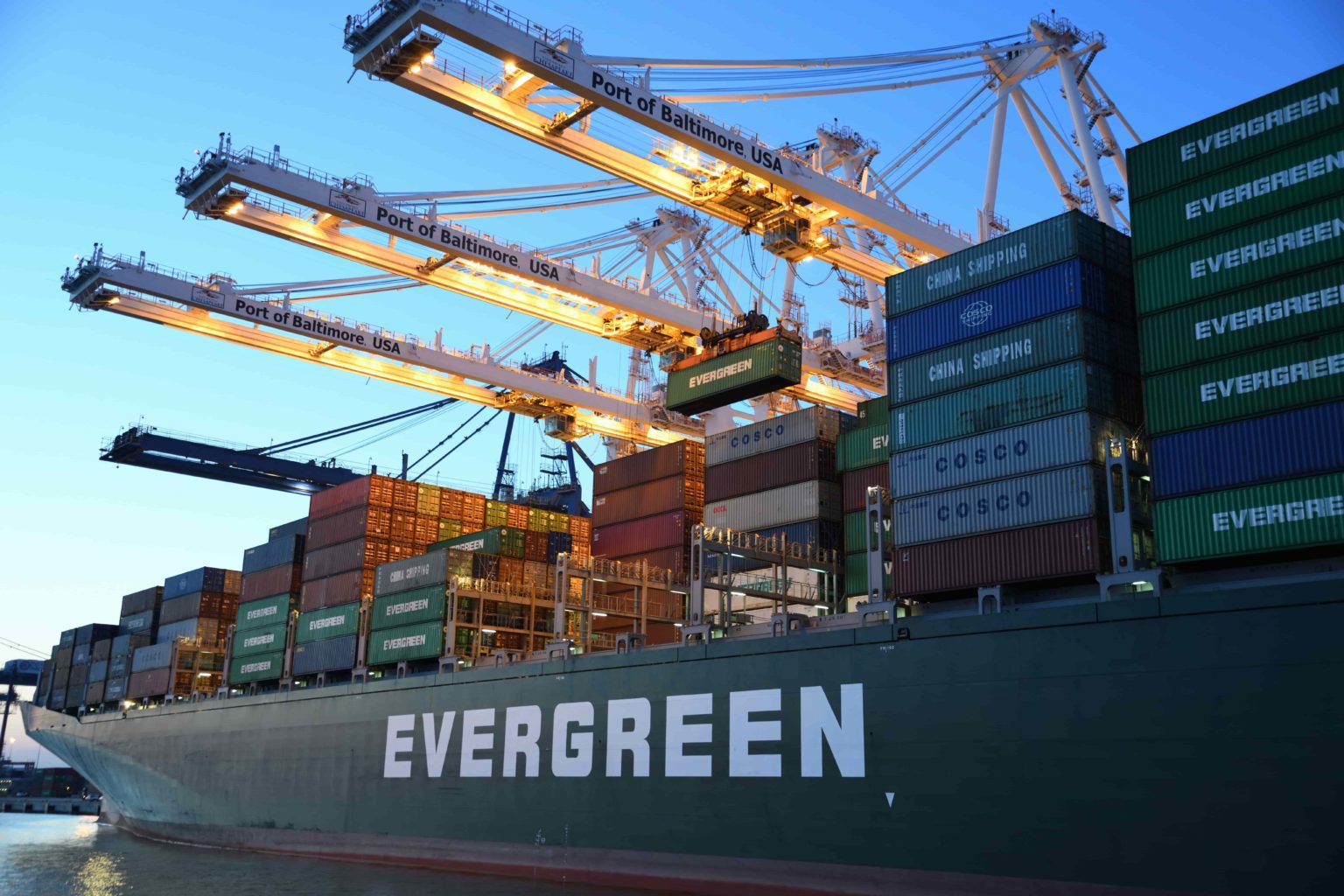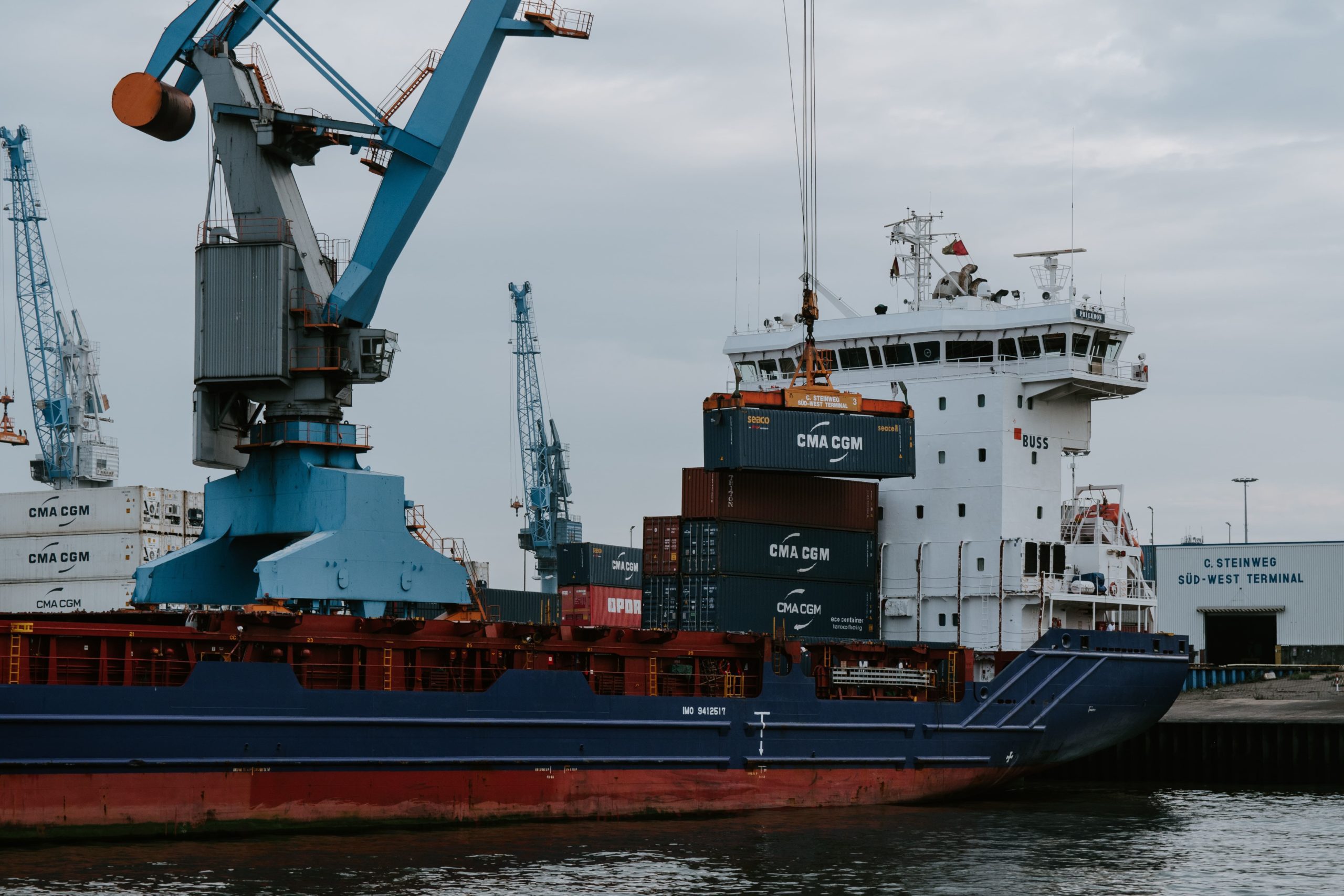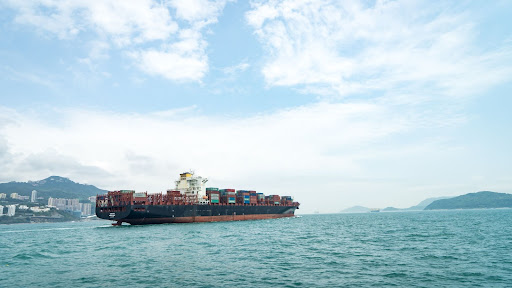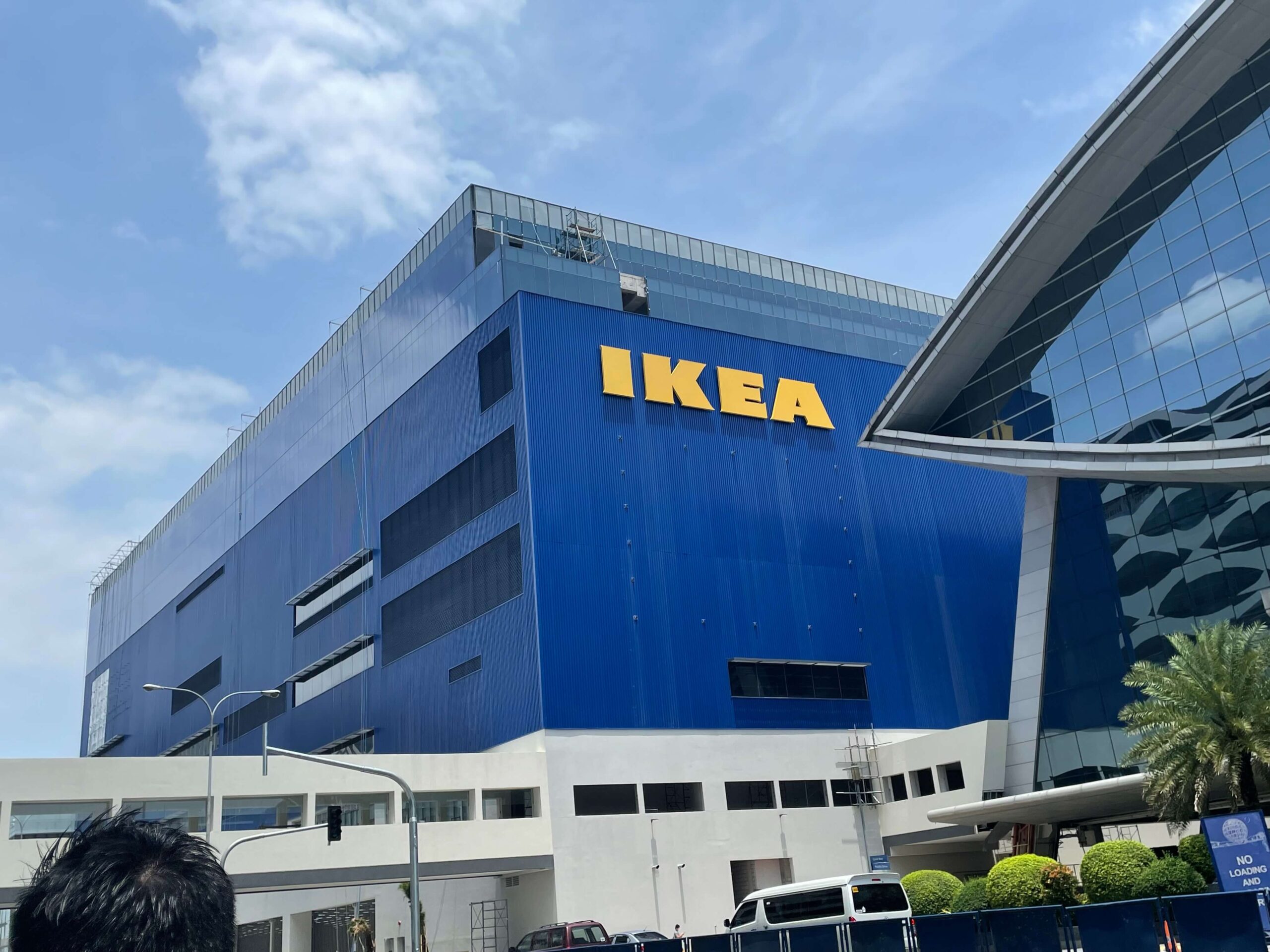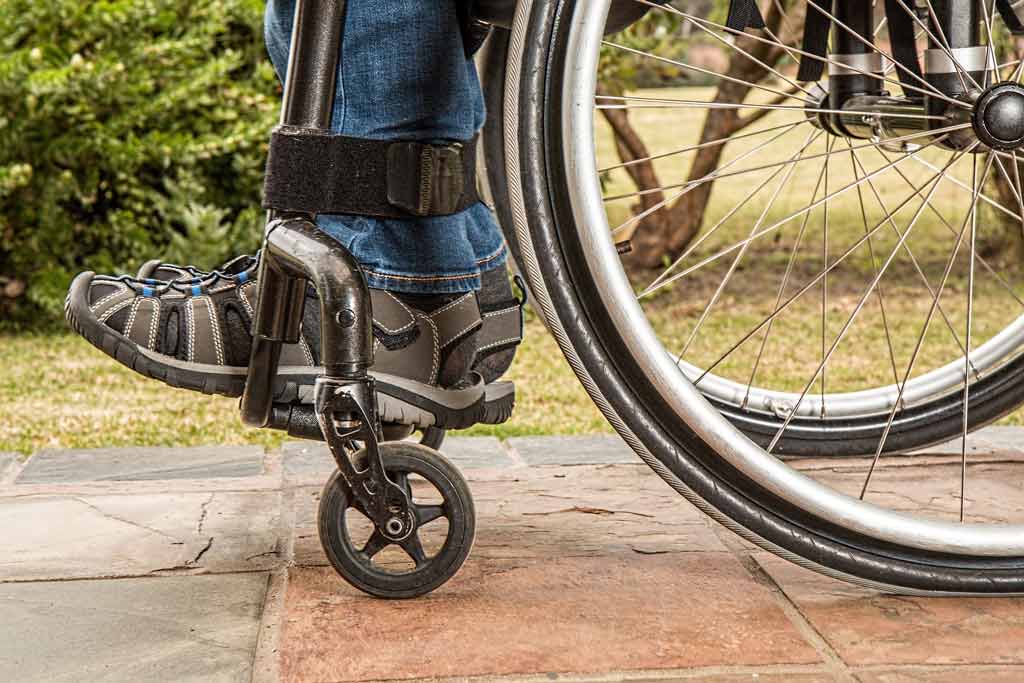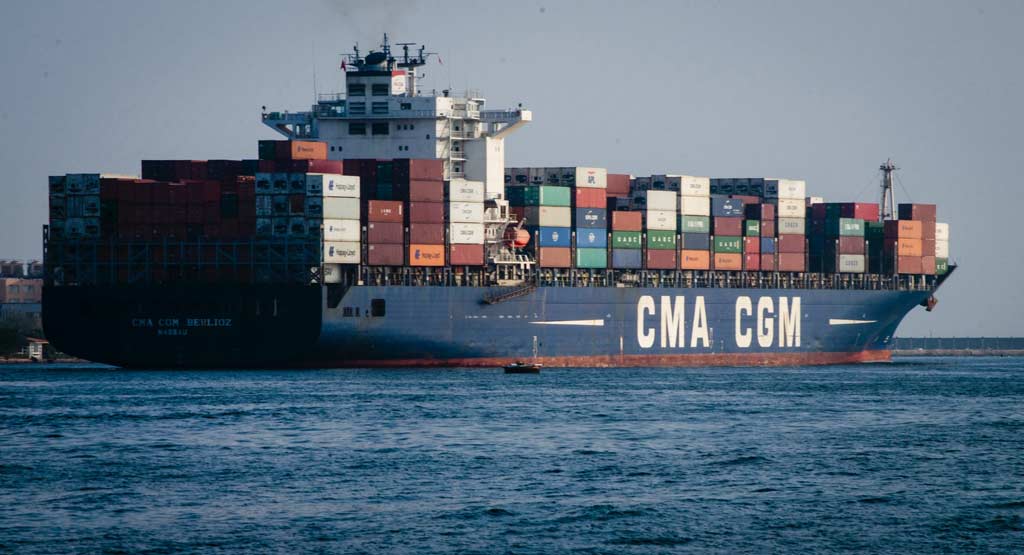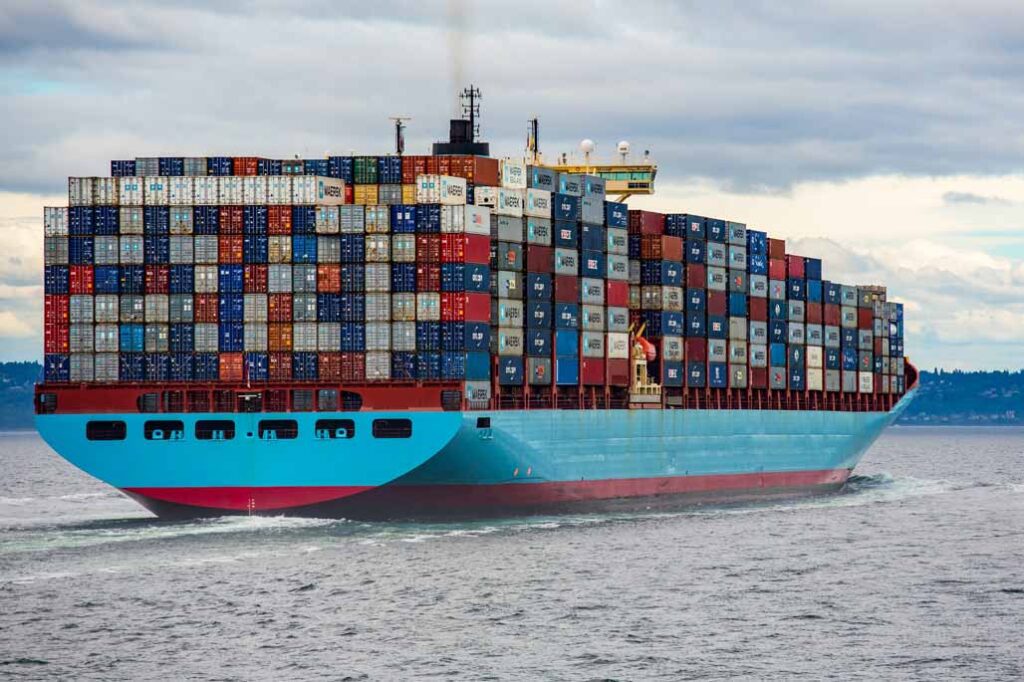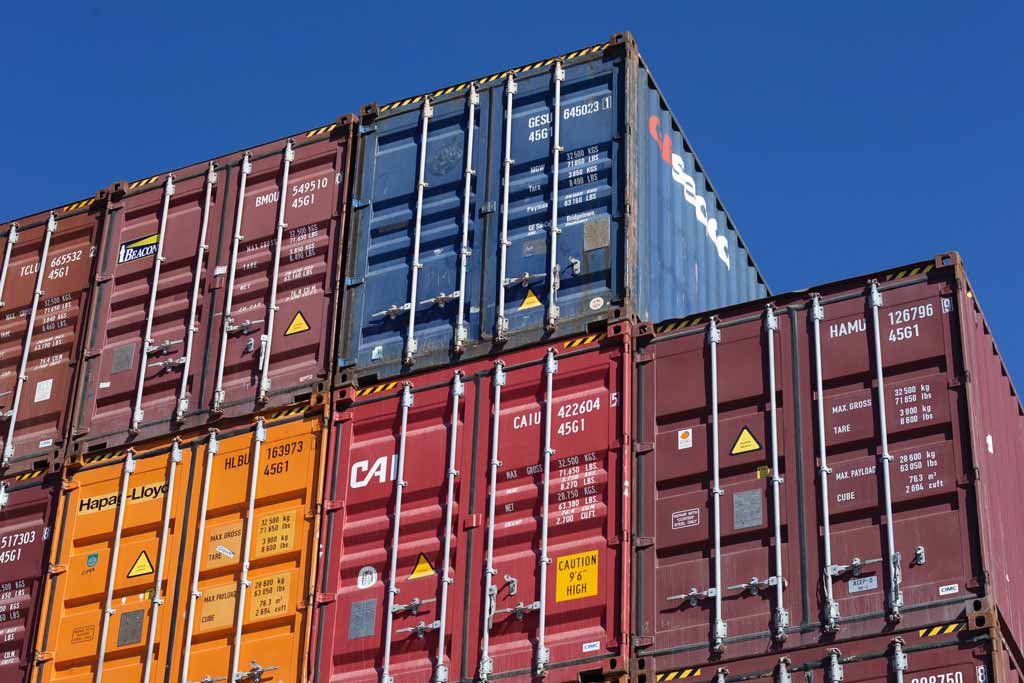We’re thrilled to announce that Trans Global Auto Logistics has been honored as one of the Top 10 Automotive Shipping Services Providers for 2023 by Auto Business Outlook Magazine!
This prestigious recognition reflects our unwavering commitment to excellence and the high standards we maintain in the automotive shipping industry. We are proud to have earned a place among the top providers, and we extend our heartfelt thanks to our dedicated team and valued customers who have played a pivotal role in this achievement.
A Spotlight on Trans Global Auto Logistics: Leading the Evolution
Auto Business Outlook Magazine recently conducted a comprehensive interview with Aldo Flores, our Chief Operating Officer, to delve into what sets Trans Global apart in the dynamic world of automotive shipping.
In the article, the magazine captures the essence of Trans Global’s transformative impact on the industry:
“The international automotive vehicle shipping industry is experiencing a significant upgrade, evolving from the fragmented and uncoordinated status quo. Among the pioneers making this possible, Trans Global Auto Logistics stands at the helm of this change.”
To learn more about this achievement and gain deeper insights into Trans Global Auto Logistics, we invite you to read the full article on Auto Business Outlook Magazine’s website. Aldo’s interview highlights the core values that drive our services and showcases the passion we have for ensuring the seamless transportation of vehicles for our clients.
Read the Full Article Here: Auto Business Outlook Magazine
At Trans Global, we are committed to delivering exceptional automotive shipping services, and this recognition fuels our determination to continuously improve and exceed expectations. We appreciate your ongoing support and trust in our services.
Thank you for being part of our journey! Trans Global Auto Logistics remains committed to revolutionizing the automotive shipping landscape, one successful delivery at a time.
Best regards, The Trans Global Auto Logistics Team
Port congestion in Europe has significantly impacted the logistics industry over the last couple of years. The experts predict that this will impact the industry for the majority of 2023. Many vehicle shipping companies are affected by the waiting times, costs, and delays in vehicles delivery – which also affects the customers.
The increased competition for port space has been one of the biggest challenges for any logistics company this year. The waiting time for cargo ships to be loaded and unloaded has increased dramatically, which means that many shipping companies are struggling to secure a cargo space to transport their vehicles. The result is also increased shipping times for customers and in some cases increased costs.
The 2020 COVID-19 pandemic had a massive impact on vehicle shipping companies and the logistics industry overall. Reduced capacity at ports, social distancing, increased health and safety protocols makes the transport of goods much more complicated than it was before the pandemic. Even in 2023 the COVID-19 pandemic is having a big impact on the automotive industry; customers are experiencing delays and disruptions in delivery of their vehicles.
However, in 2023 the pandemic isn’t the only reason for Europe’s port congestions. The war in Ukraine, potential of increased regulations and tariffs on trade in the European Union are also concerning for the shipping industry. All the new measures put in place will likely further impact the time and cost of shipping vehicles through European ports.
Europe’s port congestions affect the vehicle shipping industry worldwide. Since the port congestion started companies are exploring alternative shipping routes and the whole industry is working to improve the shipping efficiency and increase the capacity at ports. The positive news is that vehicle shipping is a complex process involving many people and organisations, and many people are working to make the ports function better and make the vehicle shipping a smoother process.
The industry is greatly affected by the current and expected congestions, the rising costs and longer waiting times. At Trans Global Logistics we believe in full transparency and keeping our customers informed of anything that could impact the shipping times of their vehicles. We believe that with proper collaboration and further measures in place the situation will be improved and the vehicles can be shipped to its new destination in a timely manner and reasonable cost.
Get An Answer to One of Our Most Frequently Asked Questions
Without a doubt, one of our most frequently asked questions is, “How long does it take to ship a car overseas?” This article will provide a detailed overview of the process and answer your questions about how long it will take to ship your car or truck. Please note that this article only applies to personal vehicles. Please get in touch with us directly for information about shipping heavy equipment or a fleet of vehicles designed for resale or commercial use.
The Average Speed of a Cargo Ship Determines How Long it Takes to Ship a Car Overseas
Judging the average speed of a cargo ship is sometimes tricky because the sea is an untamed, unpredictable entity. You never know what might happen on the water to delay your vehicle shipment. However, a qualified shipping company does everything possible to mitigate the risks.
Collecting a list of estimated freight transit times from your freight forwarder is imperative. A cost estimate for each shipping method is helpful, too. What you learn can affect your choice to go with an open-air carrier or a Roll-On/Roll-Off (RoRo) ship, or you might decide to go with an auto shipper that can transport your car via air freight. Selecting the air freight option may reduce how long it will take to ship your car or truck. At Trans Global Auto Logistics, we trust our ability to ship your vehicles quickly and without error. Here’s a breakdown of average speeds for a variety of carriers.
Consolidated Container Ship
Consolidated container ships are the most cost-effective way to transport your vehicle. Your car gets loaded into a container with other automobiles going to the same port. While more affordable than other options, the average speed of a cargo ship is low when compared to other options. Of course, that also depends on your location. Your car may reach its destination in three weeks, but when determining how long it takes to ship a car or truck, it’s more likely to take 30-40 days.
Single Container Shipping
Although single container shipping also involves a cargo ship, it reduces your freight transit times. But, unfortunately, you pay dearly for the privilege. Transporting your car in a large container of its own will likely cost twice as much as a consolidated container.
However, it takes far less time for your vehicle to voyage through the shipping process, and it will be cleared through customs quickly. When determining how long shipping a car overseas will take with this method, your vehicle should arrive in two to three weeks. It’s the optimal choice for moving classic cars.
RoRo Ships
RoRo ships are the preferred method for shipping cars. Rather than being loaded into a container, the automobile is rolled onto the ship and safely braced, then driven off once it reaches its port.
RoRo ships are faster than the average speed of a cargo ship but slower than what you’ll experience when you book a container yourself. When trying to figure out how long it will take to ship your car or truck, it comes down to the destination and total distance, though your auto shipper should be able to get your vehicle to you in less than a month. It’s an excellent middle-ground option, but you should be aware that your RoRo ship probably won’t travel a direct route to your destination.
Ultimately, you have to compare the average speed of a cargo ship to how long you can wait to have your car shipped overseas to your overall budget. If speed is more important than anything and money is no object, then air freight might be your best bet. Talk to Trans Global Auto Logistics about the pros and cons of each choice.
Determining the current state of shipping industry news is similar to looking into a Magic 8 Ball – when you shake it and the water settles, the message says, “Future Remains Uncertain.” This uncertainty is due to many factors: ongoing trade tensions between China and the United States, domestic and international politics, fuel pricing uncertainties, and environmental regulatory concerns. If those weren’t enough to roil the waters, the lingering impact of the COVID-19 pandemic continues to cast a shadow on the overview of the shipping industry’s economic future. The ongoing presence of COVID-19 continues to negatively impact charter rates, operating expenses, staffing, and logistics planning.
Shipping Industry News: The Good
Let’s start this update on the most positive note. The good news is that the shipping industry is doing better than expected. In 2020, the United Nations Conference on Trade and Development reported that worldwide maritime trade was expected to drop by over 4 percent due to the pandemic. Thankfully, those losses didn’t materialize due to the accelerated distribution of the COVID-19 vaccine starting in 2021. While there is little positive news that anyone can say about the impact caused by the global pandemic, one benefit is that the shutdown provided an overview of the shipping industry’s weakest areas, such as the need to improve risk management and emergency response preparedness in capacity logistics. The industry has been improving its position as a result.
Shipping Industry News: The Bad
One of the more pervasive and troubling trends in shipping industry news is employment and staffing. There are both immediate and longer-term concerns that the industry will need to take into account to avoid future problems. At present, shipping companies around the globe are now dealing with a significant employee shortfall in hiring and retaining crew members due to the Russia-Ukraine war. Citizens of these two countries comprise nearly 15% of the seafarers in the global shipping workforce. In addition, the closures and destruction of essential ports in these areas of the world and many young people being called into military service have created crew shortages that are not quickly replaced.
According to the United States Department of Labor, employment in seafaring occupations is expected to decrease by roughly 2 percent until 2028. It is anticipated that many currently working in water transportation will leave the sector for land-based transportation jobs in the coming years. While hiring will be necessary to replace transitioning workers, technological changes may result in newer, automated ships designed to be operated by smaller crews. Increased efficiency in computerized systems for navigation, engine control, crew management, and cargo gradually reduces the demand for on-site, in-person crews. In addition, jet propulsion cargo vessels, commonly referred to as fast ships, are making gains in certain water transportation sectors. As ocean-crossing times decrease, the nature and expectations of the industry will change. New opportunities will present themselves, and redundancies or obsolete practices will need to be retired.
Shipping Industry News: The Ugly
One of the world’s oldest professions refuses to go away; and by that, we mean piracy. Based on data from Statista, a shipping industry overview of piracy claims saw a 24 percent year-over-year increase in attacks (both successfully executed and attempted). The areas most susceptible to piracy are off of the Gulf of Guinea and Gulf of Mexico. The rise in piracy is attributed to the pandemic, which has left many governments throughout Africa, South and Central America, and South Asia with insufficient funds to battle these illegal and dangerous attacks. Pirate activity is projected to continue and worsen in the years ahead in these areas of the world.
Shipping Industry Overview: The State of 2022
In 2022, the shipping industry is currently experiencing one of the most turbulent markets on record. While demand has been strong, it seems likely that a slowdown will occur later this year. As the global economy weakens, inflation rises, and supply-chain disruptions continue, growth will slow compared to the increases in container volume we experienced in 2021. As a result of this anticipated slowdown, many major carriers are already increasing their number of canceled sailings throughout the three major trade lanes: US West Coast-Asia, US East Coast-Asia, Northern Europe-Asia. Of these three routes, the US East Coast route is the most robust, with only 10 percent of its capacity reduced. The US West Coast Route is not so fortunate, and a reduction of nearly 25 percent is expected. However, as those of us who have been in the business a long time know, cycles go back and forth, and it’s only a matter of time before freight surges follow, and demand and capacity rise again.
Shipping Industry News: A Little Bit of Entertainment
Today’s article about shipping industry news can’t be ALL business! So to lighten things up, here’s a curious bit of “entertainment” news you might have missed. The world’s largest cargo freight ship recently arrived in the United Kingdom. The vessel, called the Ever Ace, is a 1,300ft ship capable of holding 23,992 standard containers. We believe it’s a current world record! Ever Ace arrived at Britain’s largest container port, Felixstowe in Suffolk, and is operated by Taiwan’s Evergreen Marine Corporation.
Let’s hope Evergreen and Ever Ace has better luck than its sister vessel, Ever Given. As you may recall, that’s the vessel responsible for blocking the Suez Canal in March 2021. That incident went down in shipping history as one of the biggest traffic jams on record!
Staying on Top of Shipping Industry News is Our Business
At Trans Global Auto Logistics, we help businesses navigate complex shipping challenges. With offices in Dallas and Orlando, Florida, and shipping warehouse facilities in Los Angeles, New Jersey, and South Carolina, Trans Global Auto Logistics is a licensed and bonded freight forwarder and Non-Vessel Owning Common Carrier (NVOCC). Our three decades of logistics experience and risk mitigation best practices protect your cargo and bottom line. Contact us today to learn more about our services and request a price quote.
No one wants to be caught unawares with the holidays approaching, and that means it’s time to consider international shipping costs. This season, be prepared with the facts on international shipping delays so that you know what to expect.
Why Are There International Shipping Delays in 2021?
Back in 2020, many people assumed the effects of the COVID-19 pandemic would essentially be over by the time the calendar turned to 2021. Of course, that didn’t happen, and this year’s delays are likely going to extend into if not beyond 2022. Goldman economist Ronnie Walker explains, “Backlogs and elevated shipping costs are likely to persist at least through the middle of next year because no immediate solution for the underlying supply-demand imbalance at US ports is available.”
Governments, retailers, and individuals have done as much as they can to prepare for the holiday surge but only so much can be done either preventatively or proactively when the entire world is having the same problem. It’s an oversimplification to say that all delays are because of COVID-19, but the generalization isn’t too far from the truth. Since port congestion and other symptoms have no way to get better, the entire situation is really just getting worse. People want more things shipped than ever, but that doesn’t get it to them even faster; in fact, with the backlogs, it means more delays.
Different International Shipping Methods
To understand what to expect with delays in shipping this season, it’s first critical to recognize the different methods that are available for global shipping. While most international shipping happens over water through cargo transport, there are also options through the air. Learn more about different international shipping methods below. And remember, even the most secure or fastest methods can’t be completely immune from international shipping delays.
Roll On Roll Off
Usually abbreviated as RoRo, roll on roll off is the most popular method for international boat shipping and other large shipping services. While consumers may not care how their items are shipped, the method selected can have a significant impact on how soon their products get to them.
Expected Delay: Days to weeks; time varies. Ports are currently overwhelmed and there are worker shortages causing gridlock at each stage in the global supply chain due to consequences of the pandemic.
Container Shipping: Shared or Dedicated
As the name indicates, this type of shipping stores goods in a container, either shared or dedicated. Similar to open vs. closed transport over land on the road, the more private or exclusive a shipping situation is, the more expensive it is.
Expected Delay: Days to weeks; time varies. Many cargo containers are gridlocked at ports and experiencing international shipping delays.
Air Freight
Air freight is the quickest but most expensive shipping method, occurring in hours rather than the days or weeks it takes for cargo by sea shipping. With all the port problems going on right now for ocean cargo shipping, air freight may seem especially tempting. However, in reality, airports have many of the same concerns as sea ports.
Expected Delay: Hours to days; time varies. Airport restrictions make it difficult for air freight items to take off and land. Processing also takes longer than it did prior to the pandemic.
Understanding International Shipping Costs This Year
Obviously, in general, costs will be higher due to international shipping delays 2021 has brought, with effects that vary, but in general both lower supply and increased demand. Air freight is still more expensive than standard ocean cargo shipping, but now the ratio is even higher for how much more it costs. It’s not just that shipping costs and times are increased; products themselves will also likely continue to cost more. Inflation is continuing to affect prices at each stage of the supply chain.
People typically look for the cheapest shipping options, but taking the lower cost often means sacrificing security, quality, and speed in the shipping conditions. It is difficult to even generalize expected delivery times for different shipping methods because the reality is so dependent on so many factors, which include:
- The port of departure
- The port of arrival
- The distance between the port of arrival and the ultimate destination
- How current travel and shipping restrictions are affecting and implemented in the various relevant locations
- What type of shipping method is used
- What companies are involved
And that’s just to name a few. For example, a shipment of high-end furniture from India to the United States in a shared container will definitely take a lot longer than an order of throw pillows being flown from Canada to the East Coast, but it may cost a lot less.
What Does This Mean for You?
So there’s delays, and it’s hard to know how it will affect costs, but how does that affect your shopping? Well, for starters, experts recommend getting shopping done as soon as possible. It won’t matter if companies have a three-week backlog if you get your Christmas shopping done before Black Friday. It’s also important to consider that some things may not be available in your price range in 2021 that would have been workable in 2019. But for something that’s really important, don’t be afraid to put down the funds necessary for a quality, secure shipping experience.
Get Qualified Shipping Support
Trans Global Auto Logistics is proud to serve as a bonded Non-Vessel Operating Common Carrier (NVOCC) and Freight Forwarder with more than 30 years of experience. While it’s true that we have never seen anything like the international shipping delays 2021 has brought with continuing effects of the pandemic, we are still the experts to come to when it comes to qualified shipping support. Reach out now for a quote on our services or more details.
In the midst of widespread global supply chain backups including port gridlocks and international shipping delays, the United Nations has committed to reducing the problematic ecological effects of so much shipping. Countries have pledged to work together to create green corridors as zero-emission shipping routes in a recent plan that looks to the future of the world. Learn more about the context and importance of these pledges below.
What is the Clydebank Declaration?
At the United Nations global climate summit in November 2021, 22 countries, including the United States, came together to agree to a specific course of action to focus on making shipping more friendly to the environment. Their commitment is referred to as the Clydebank Declaration, pledging to work together to invest, promote, and create clean energy infrastructure at ports. The pledge invites the creation of green corridors between ports for more eco-friendly alternatives to the fossil fuel usage of major trade routes that are currently extant. The Clydebank Declaration aims towards “reducing the maritime sector’s emissions to zero by 2050,” according to the LA Times.
The important context of the Clydebank Declaration is that it “comes as the ports of L.A. and Long Beach, the busiest in the U.S., face increased scrutiny over cargo ship logjams and worsening air pollution,” as the LA Times explains. One attorney remarked that “what was already a bad situation” in terms of delays and shortages with supply chain slowdowns and lockdowns is “made worse from an air pollution perspective.” While it is important to understand how higher costs and more delays can affect holiday shopping, air quality around ports should also be a concern.
Where did this declaration come from?
The Clydebank Declaration did not just come out of the blue. The lingering effects of the pandemic have led the United Nations to be more aggressive with their plans for climate-focused changes, goals that go towards the Paris climate agreement made in 2015 which focuses on limiting global warming, bringing together all nations in a common cause. Just as every country has been affected by the pandemic, every country is affected by climate change. It takes a united globe to enact lasting change towards helping the environment. Essentially, the Clydebank Declaration seeks to curb shoreline air pollution by transitioning ships to cleaner sources of power. This is a common goal for the world to prioritize the environment for all of our sakes.
And, for your information, this is referenced in the name of the United Nations’ declaration. Clydebank is a Scottish town, literally situated on the banks of the Clyde River. Serving as the historic center of the Scottish shipbuilding industry, Clydebank is still a place involved in maritime activities. Naming the declaration after Clydebank demonstrates the United Nations’ understanding of the past and present of shipping as we move towards a better future. Now that we understand the recent declaration asking us to prioritize greener shipping solutions, let’s get into how this prioritization can be done through the concrete creation of special trade routes that are focused on helping the environment.
What are green corridors?
As part of the commitment in the Clydebank Declaration to create zero-emission shipping routes, the Getting to Zero Coalition report recommended the creation and use of green corridors. But what are these corridors and how will they help with the environment? As defined by the Maritime Executive, a green corridor refers to “a shipping route between two major port hubs on which the technological, economic and regulatory feasibility of zero-emissions ships is accelerated by public and private action.” So, these corridors are routes that will become “green” or environmentally friendly. From fuel producers and vessel operators to regulatory authorities, change is possible with support from all relevant parties.
The Getting to Zero Coalition report noted in the preface that green corridors can constitute “targeted regulatory action and route-specific collaboration in the value chain,” “with a focus on scalability and replicability,” which will be necessary to promote zero-emission shipping routes in 2021. Overall, as Maritime Executive declares, “the creation of green corridors offers the best opportunity to accelerate progress in tackling challenges of decarbonizing the shipping industry.”
Why is striving towards zero-emission shipping important?
Since most cargo ships are powered by “dirtier” diesel fuel than what’s used in cars, “the shipping industry is a major emitter of planet-warming greenhouse gases” on a global scale, as the LA Times warns. The Maritime Executive explains that the “shipping industry…is responsible for approximately 80 percent of global trade” and “accounts for about 3 percent of total global CO2 emissions.” That might not seem like a lot, but the LA Times gives context: “cargo ships collectively spew an average of 1 billion metric tons of carbon dioxide into the atmosphere each year, about as much as all U.S. coal-fired power plants combined.”
And that much carbon dioxide emission is not good for the environment or us. It’s not just that it’s harder for people with asthma to breathe or harder for us to see the stars at night; these emissions are permanently changing the earth, which can affect the planet’s habitability. So this is critical for individual and global health on a planetary scale. “Saving the planet” isn’t just a nebulous idea; it’s a concrete focus the United Nations is trying to promote.
Shipping for the People
As an expert in shipping for over 30 years, Trans Global Auto Logistics provides shipping for the people. The current attention to shipping and advocating for more ecologically efficient shipping is exciting, thinking of a world of zero-emission shipping using green corridors that were created as part of international efforts to work together for each other. We are proud to be a part of the important efforts going forward internationally as we work together to make the world a better place. If you are interested in our expertise or specifics about our processes, please contact us for more information. We’d love to talk to you about your individual questions or concerns.
It’s no secret that the global supply chain is in chaos and has been for months. Thousands of shipping containers are gridlocked at both the Long Beach and Los Angeles ports. The crisis started during the initial Covid-19 outbreak and has since worsened, creating holiday shipping delays.
The jam is attributed to a perfect storm of contributing factors. First, there was a back order of goods after Asian factories shut down during the initial Covid-19 outbreak. Once shipping resumed, ports were swamped with deliveries and faced major labor shortages due to the pandemic. Experts believe the problems at the ports could last for years— causing some big box retailers to take matters into their own hands.
Costco has chartered three cargo ships to transport goods from Asia to North America. The retail giant said the cargo ships will be chartered for the next year and each load will carry 800-1000 shipping containers per load. The ships will make at least 10 deliveries. The company is hoping to get ahead of the holiday surge by stocking up on toys, consumer goods, and other hot holiday items.
Other retailers, like Home Depot, have also chartered ships.
“We have a ship that’s solely going to be ours and it’s just going to go back and forth with 100% dedicated to Home Depot,” President and Chief Operating Officer Ted Decker told CNBC.
Other major retailers like IKEA, Target, and Walmart are also chartering their own cargo ships.
This move will hopefully keep shelves stocked during the holiday season, but it will come at a cost. Increased shipping costs combined with a shortage of seasonal workers will most likely mean higher costs for end consumers. Experts say the best way to shop this Christmas is to hit the stores early and try to wrap up shopping before Black Friday to avoid holiday shipping delays.
Why Are There Still Global Shipping Delays?
Since the pandemic and its effects continue, there hasn’t been a chance for the shipping industry to recover. Instead, the status of shipping is progressively worsening. In fact, experts believe the problems at the ports could last for years— causing some big box retailers to take matters into their own hands.
How Do Global Shipping Issues Affect Consumers?
The decision for big box retailers to charter their own cargo ships will hopefully keep shelves stocked during the holiday season, but it will come at a cost. Increased shipping costs combined with a shortage of seasonal workers will most likely mean higher costs for end consumers. Experts say the best way to shop this Christmas to minimize the effects of holiday shipping delays is to hit the stores early and try to wrap up holiday shopping before Black Friday.
FAQs
Why are there international shipping delays?
International shipping delays are caused by a variety of factors that are the main effects of the COVID-19 pandemic.
When will shipping delays stop?
There’s no clear time for global shipping delays to stop. The effects of the current crisis have lingered for a while and could continue for years.
How can I avoid shipping delays?
There is no way to completely guarantee that you avoid all global shipping delays, but you can pre-order items and shop early. Experts recommend finishing Christmas shopping before Black Friday to account for likely holiday shipping delays for gifts purchased online.
Shipping Security with Trans Global Auto Logistics
In the midst of potential holiday shipping delays and all the continuing global shipping issues, rest assured that you do have access to seamless transportation and shipping from a trusted source. You can be confident that the experts in global shipping and auto transport for 30+ years will do the job right. Request a quote today to get the shipping security offered only with Trans Global Auto Logistics.
The Pacific Ocean is the largest and deepest body of water on earth, covering more than 30 percent of the planet’s surface. Tropical storms and rogue waves make the ocean among the roughest waters in the world to navigate. Oaring for weeks across 50-foot waves alongside massive blue whales makes rowing across the Pacific Ocean one of the toughest journeys on earth, though certainly, the whale sightings help!
According to the Ocean Rowing Society, less than 440 rows have been completed successfully across the world’s oceans. The extreme physical, mental, and emotional challenge, though, will not stop the Endurance Limits team from rowing across the Pacific Ocean in an attempt to break a world record. With support from Trans Global’s Pacific Ocean transport services, Endurance Limits will try to make rowing history to raise funds for a good cause.
Who are Endurance Limits?
Endurance Limits are a team of four friends who are no strangers to extreme challenges. These men are not endurance athletes or marine commandos, but normal guys with regular day jobs who enjoy pushing their own physical and mental limits. While establishing a new world record is the most challenging adventure they have ever signed up for, the team members have been on expeditions in the past that have stretched the limits of human endurance.
Endurance Limits Team Members
Darren Clawson, a police officer and the founder of the Endurance Limits team, has raced in jungle marathons and run across an entire country. Clawson’s police colleague, Aaron Worbey, has competed in rowing races across the Pacific Ocean. Darren Baker is a financial planner who has participated in many ultra-endurance swimming competitions. Simon Evans, an executive at an IT consulting firm, has taken part in plenty of rowing and cycling sporting events.
While Endurance Limits’ crew members may seem like your typical thrill-seekers, these guys are not competing in a world-record-breaking rowing race to get an adrenaline high and make a name for themselves. With help from TGAL’s Pacific Ocean transport services, Endurance Limits will strive to set a new world record to gain publicity and raise funds for their charitable missions.
Endurance Limits’ Mission
Endurance Limits was born from Hadley Clawson’s struggle with a rare form of epilepsy. The rare disorder caused Hadley to experience debilitating seizures throughout his life, which eventually left him mentally impaired and physically disabled. Hadley now lives in St. Elizabeth’s Centre for people with epilepsy and other profound disabilities, receiving 24/7 specialist care for his complex medical needs.
Hadley is Darren Clawson’s son, the founder of Endurance Limits. Darren formed the Endurance Limits team with three of his most daring and determined friends to help vulnerable people like his son live life to the fullest. The team is rowing across the Pacific Ocean to raise funds for charities and organizations that help people live healthier and more fulfilling lives. Endurance Limits’ charitable missions include:
Building a New Health Center
St Elizabeth’s Centre, where Hadley currently lives, has launched a fundraising campaign to build a new specialist healthcare facility so they can deliver better care to their physically and mentally impaired residents. Endurance Limits came up with the idea of rowing across the Pacific and setting a new world record in order to raise $150,000 for upgrading St. Elizabeth’s facilities.
Building an onsite health center will not only benefit St. Elizabeth’s residents, but it can also improve the lives of thousands of people around the world. St. Elizabeth’s specialist health center can provide valuable data and clinical trial participants to world-renowned research programs, helping scientists find new solutions for neurological disorders like epilepsy.
With logistics support from TGAL’s Pacific Ocean transport services, a world-record-breaking row across the Pacific will bring more attention to St. Elizabeth’s fundraising campaign, helping them acquire enough resources to build the needed facility.
Increasing Awareness of Alternative Treatments
Endurance Limits is promoting and raising funds for Matthew’s Friends to increase public awareness of alternative treatment options for epilepsy.
Matthew’s Friends is a non-profit organization that educates and provides resources to families that want to adopt ketogenic therapies for relieving epileptic seizures.
Numerous studies have found the ketogenic diet to be very effective in patients that do not respond to anti-epileptic drugs. Rowing across the Pacific with a Matthew’s Friend logo on Endurance Limits’ boat will bring the organization into the spotlight and increase people’s knowledge on alternative treatment options for chronic seizures.
Supporting Cleaner Oceans
The world’s oceans are choking on plastic pollution. In the Pacific Ocean alone, an area three times the size of France has become one of the largest dumps for plastic garbage in the world. Plastics have toxic chemicals that harm both marine and human health. Toxins from plastic waste in the oceans enter the human food chain through seafood and tap water, causing neurological disorders like epilepsy among other health conditions.
With support from TGAL’s Pacific Ocean transport services, Endurance Limits will use this world-record-breaking event to raise money for The Marine Conservation Society’s (MCS) Clean Seas program. MCS is working with governments, businesses, and communities around the world to reduce plastic pollution and promote cleaner oceans. Rowing across the Pacific and breaking the current world record will help MCS’s fundraising campaign gain more public attention and resources, supporting cleaner oceans and healthier lives.
The Current World Record in Pacific Ocean Rowing
To get maximum publicity for these charities and raise funds for their philanthropic goals, Endurance Limits must try to break the current world record in Pacific Ocean rowing. The current world record was set during the Great Pacific Race in 2016 by the Uniting Nations team.
Uniting Nations was able to row from Monterey, California, to Honolulu, Hawaii, in 39 days, 9 hours, and 56 minutes, setting a new Guinness World Record as the fastest westbound crossing to Hawaii. Endurance Limits must break Uniting Nations’ record to make rowing history and accomplish their charitable goals.
TGAL’s Role in Helping Endurance Limits Break the World Record
Trans Global Auto Logistics is honored to help Endurance Limits row across the Pacific Ocean in record time so they can accomplish their charitable goals. TGAL is not only sponsoring the event, but will also handle all of Endurance Limits’ Pacific Ocean transport requirements to help the team make rowing history. With more than 30 years of experience in international boat shipping and ocean transportation, TGAL has the expertise needed to facilitate the logistics of this high-profile sporting event.
Endurance Limits is building a new rowing boat at a manufacturing facility in Devon, UK, to participate in this event. The boat should be shipped through the Atlantic and Pacific Oceans to reach its destination port in Monterey, California. From Monterey, California, the team must row 2,700 miles across the Pacific Ocean to Honolulu, Hawaii, in less than 39 days to break the current world record. TGAL will manage all of Endurance Limits’ shipping needs across multiple oceans so the team has more time to prepare for setting a new world record.
The Process of Transporting Endurance Limits’ Boat
A fully bonded and licensed freight forwarder, TGAL uses its relationship with multiple logistics and shipping partners around the world to transport Endurance Limits’ boat to its final destination. Our Pacific Ocean transport services start by hauling the boat from its manufacturing facility in Devon, UK, to delivering it at the destination beach in Monterey, California. Below, we explain the seven processes that TGAL goes through to ship Endurance Limits’ boat for rowing across the pacific:
- Export haulage – TGAL arranges for the boat to be transported on land from the manufacturer’s premises to the warehouse of a shipping partner in the UK.
- Export customs clearance – Our shipping partner will submit the required documents to UK authorities to clear the boat for export.
- Origin handling – The boat is inspected, placed inside a container and then moved to a seaport where it is loaded onto a ship.
- Ocean freight – The boat is transported by a shipping line or charterer contracted by TGAL.
- Import customs clearance – TGAL submits documents and pays customs duties to US authorities to obtain clearance for importing the boat.
- Destination handling – The container with the boat is unloaded from the ship and transported to one of TGAL’s warehouses.
- Cargo delivery – TGAL delivers the boat to Endurance Limits in Monterey, California, for rowing across the pacific.
Partner With TGAL to Transport Your Boat Around the World
Do you need Atlantic or Pacific Ocean transport services to ship your vessel to another country? From fishing boats to superyachts, we can help you transport vessels of all shapes and sizes to any destination of your choice, while preventing damage and maintaining their pristine condition. Call us at 972-602-1670 to inquire about our international boat shipping services or request a quote for transporting your vessel to another country.
Global shipping is in chaos. After somewhat recovering from a COVID-19 recession, the industry is now battling a confluence of disruptive factors that have led to an international transportation crisis. From manufacturing plant shutdowns in North America to goods piling up on Chinese factory floors, an extremely tight logistics capacity is disrupting international trade on a scale not seen in modern history.
The international shipping capacity crunch has sent global supply chains into disarray, posing a challenge to post-COVID economic recovery. Tight capacity is causing manufacturing disruptions, transportation delays, and higher shipping costs, adversely impacting the supply chains and profit margins of many businesses. Let’s review tight capacity, what it is, and how our team at Trans Global Auto Logistics (TGAL) can be your partner in navigating the issues involved.
What is Tight Logistics Capacity?
Before delving into tight capacity, let’s first try to understand what capacity means in the logistics industry. Capacity in the logistics industry is the maximum amount of cargo that can be carried by transport modes like trucks, trains, and ships. In simpler terms, capacity is the amount of shipping space available for transporting goods to their destination.
When there is more capacity supply than demand, we experience overcapacity. But when there is more demand for capacity than available supply, we experience tight capacity. Many factors, some of which stem from the pandemic, have led to the current tight logistics capaaity around the world. Below, TGAL will explain how insufficient shipping container capacity, congested ports, and labor shortages are causing the global transportation crisis we’re facing today.
Why is There Tight Capacity?
Some factors that contributed to the current disruption in transportation, like labor shortages, existed before COVID-19. But a cascade of events that followed the global pandemic have created an international logistics crisis, squeezing all parties involved in the global supply chain. Some factors that have caused the current tight logistics capacity include:
Increase in Demand
As countries locked down and imposed stay-at-home orders, online shopping became most people’s favorite pastime. Lower fuel costs, a spike in eCommerce shopping, and an increased need for more personal protective and medical equipment led to more demand for shipping container capacity to transport goods around the world. Increased demand for logistics capacity led to decreased supply of available freight space, leading to the global transportation crisis we are experiencing today.
Port Congestion
COVID safety precautions have decreased the availability of dockworkers in many of the busiest ports around the world. A smaller workforce at The Port of Los Angeles ⎼ the busiest port in the United States and the main point of entry for goods from Asia ⎼ has led to slower operations and delays in handling cargo.
Ships are stuck for days offshore in floating traffic jams and empty containers are piling up at the port. There are currently more than 285,000 empty shipping containers lying idle at the Los Angeles port. Slower loading/unloading and countless empty containers sitting idle at busy ports around the world are major contributing factors to the global logistics capacity crunch.
Chinese Trade Surplus
China was the first country to get hit and then recover from the Coronavirus. As a result, its economy bounced back quicker than other countries. This uneven economic recovery led to significantly more Chinese exports heading to the US and Europe than the other way round. China is aggressively demanding empty containers to be sent back from export destinations, resulting in tighter shipping container capacity for American and European exporters.
Labor Shortages
Many countries were struggling with truck driver shortages long before the pandemic. But the pandemic quarantined some drivers and caused many others to lose their jobs, resulting in a severe shortage of truckers in many countries around the world.
Trucks are needed to haul shipping containers from ports to the rest of the country. A lack of truck drivers is tightening logistics capacity and delaying the delivery of goods to their final destination, disrupting entire supply chains across many industries.
Impact of Tight Capacity on Businesses and Consumers
Capacity constraints in the logistics industry are creating bottlenecks in international transportation, particularly with the recent issues at the Suez Canal. From manufacturers to businesses and consumers, every entity in the supply chain is feeling the pain of a global capacity crunch. Delayed or canceled deliveries of raw materials are leading to factory shutdowns in many countries around the world. Honda halted all its American and Canadian manufacturing operations as port logjams hampered parts procurement.
Along with transportation delays, constraints in logistics capacity are leading to skyrocketing shipping costs. Businesses wait for weeks and are willing to pay premium rates to get sufficient shipping container capacity for transporting their cargo. The shipping crisis has caused a three-to-six-fold increase in international transportation costs, hurting businesses’ profit margins and consumers’ pockets. McKinsey estimates international shipping costs to remain high for the next two years, threatening the viability of small businesses that rely on importing and exporting goods.
How to Deal With Tight Logistics Capacity
The international transportation crisis has forced governments and businesses to come up with new solutions for mitigating tight capacity. Congress has recently introduced a bill ⎼ the DRIVE Safe Act ⎼ that can help relieve the country’s truck driver shortage. Carriers are implementing several measures ⎼ such as adopting more efficient unloading systems and reducing container detention periods ⎼ to help ease the shipping capacity crunch.
Despite all these measures, the logistics capacity crunch will not go away anytime soon. A fast-recovering global economy along with fewer shipping containers in inventories mean the transportation crisis is here to stay for the foreseeable future. Businesses need to form long-term partnerships with shipping providers to get priority access to limited capacity when they need it.
Getting Affordable Rates During Tight Capacity
If you run an import and export business or just need to ship your personal goods to another destination, the shipping container capacity crunch will make it difficult to transport cargo cost-effectively. Many logistics companies will charge you hefty fees for shipping your freight, which can put a big dent in your wallet or damage business finances. To combat the high costs of tight capacity, you need a logistics partner with extensive experience and expertise in the industry to get the most competitive rates for your freight.
Partner With Trans Global to Get Competitive Rates
With more than 30 years of experience operating in the freight and transportation industry, Trans Global Auto Logistics (TGAL) has the knowledge and expertise needed to overcome the challenges of tight logistics capacity. We have built solid relationships with numerous shipping lines and charterers over the past few decades, allowing us to get the most competitive rates in the market during times of shipping container capacity shortages.
Unlike other freight and logistics businesses, we own our warehouses, which helps us offer lower-cost shipping services to our customers. If you’re struggling to get affordable rates for shipping your cargo because of tight logistics capacity, we can help. Call us at 972-559-3229 to learn more about our transportation services or request a quote for shipping your cargo.
[spb_text_block animation=”none” animation_delay=”0″ simplified_controls=”yes” custom_css_percentage=”no” padding_vertical=”0″ padding_horizontal=”0″ margin_vertical=”0″ custom_css=”margin-top: 0px;margin-bottom: 0px;” border_size=”0″ border_styling_global=”default” width=”1/1″ el_position=”first last”]
Buying a Classic Car & Classic Auto Transport
When you’re ready to jump into the world of classic cars, it’s best to avoid impulse buys. Buying a classic Mustang ‘68 that somebody’s put up on Craigslist for sale can either turn out to be a classic bargain or a classic waste of time and money. It’s a big investment you are going to make down the line. Maintaining, restoring, purchasing, and importing or exporting vehicles from the USA can be extremely costly. Moreover, the insurance coverage here works differently from that of general car insurance.
Unlike normal cars whose value typically depreciates, the value of a classic car appreciates with time. International classic car shipping is on-demand in the US, and since the service can be expensive, an informed decision always helps.
No matter if you are planning to purchase a restored car, or want to restore it yourself, these tips will come in handy. Check out all the aspects of importing and exporting vehicles from the USA and the best time to buy a classic car.
Differentiate Classic Cars & Old Cars
Knowing how to differentiate classic cars and old cars is half the job by itself. Classic cars often require a lot of attention and maintenance, which may have you bidding adieu to a lot of cash. You’ll not want to spend more time on maintaining the car than cruising on it. First-time buyers should focus on buying a classic car that needs little to no restoration, as restoration involves a lot of expertise and costs. And remember, all old cars aren’t classic cars.
Check Mileage:
When buying a classic car, do not forget to bring mileage under consideration. Fewer miles showing on the odometer will mean a higher value vehicle. A higher mileage car doesn’t need to be a dealbreaker, but keep in mind this will directly impact the price.
Run from Rust:
If you see rust on your chosen vintage car, avoid it by any means. Unless you hire a professional to remove all the rust, chances are high that it will reappear again. Rust on a classic car is never a good sign.
Check the VIN:
Always make sure to check the VIN or Vehicle Identification Number of the car you’re planning to buy. If the VIN on the title matches that of the original car, it is fine. If not, chances are high the vehicle was stolen or may have otherwise been illegally obtained.
Insurance:
Check out the insurance coverage of the car you plan on buying. Make sure you are looking at insurance companies that provide a good value, specifically for vintage cars.
Classic Auto Transport
Classic auto transport can be challenging, but now is the right time to get started. 2020 has seen a massive downfall in the global economy. This has resulted in many taxes and import-export duties being lifted. If you are looking for the best time to import or export vehicles from the USA, it’s now!
Classic car imports and exports have been cheaper in several countries, but if you are planning to import a classic car in the US, you should know that there are specific import taxes and duties you may need to pay. Keep in mind, American classic cars come with no import taxes. This is much better than a 10% duty on foreign cars.
Another added advantage of American classic car imports, like the Mustang, is that you’ll only need to pay 5-10% VAT on the purchase amount. The exact percentage depends on the country you are importing it from. Exporting vehicles from the USA likewise has its own set of custom clearance rules.
International classic car shipping has become easier in recent years. As of 2020, several countries have waived tax to help boost their economy, and hence, classic cars now cost less than they used to be before. 2020 has become the best time to buy a classic car as a result.
Hire an Experienced Transport Company for the Job
Classic auto transport involves a lot of paperwork and other aspects that are far more complicated than you might think. Hiring an experienced car shipping company, especially one that focuses on classic vehicles, not only makes the process trouble-free but also cuts down costs and time.
When looking into exporting vehicles from the USA, always ensure your shipping company has proven expertise and is able to provide you with insurance coverage, should anything go awry. Affordability is another factor you should consider. Most importantly, the shipping company has to be licensed and should be able to take care of all the customs clearance documentation for you.
Why Work with Trans Global Auto Logistics for Your Classic Auto Transport Needs
Trans Global Auto Logistics is a licensed NVOCC carrier and car transportation company with 30 years of experience. We help give classic car collectors peace of mind. Our experienced logistics team takes control of all the custom clearances, marine insurance, and inspections to help you transport your car in pristine condition. Contact us now for assistance with exporting vehicles from the USA or anywhere in the world with ease.
[/spb_text_block]

